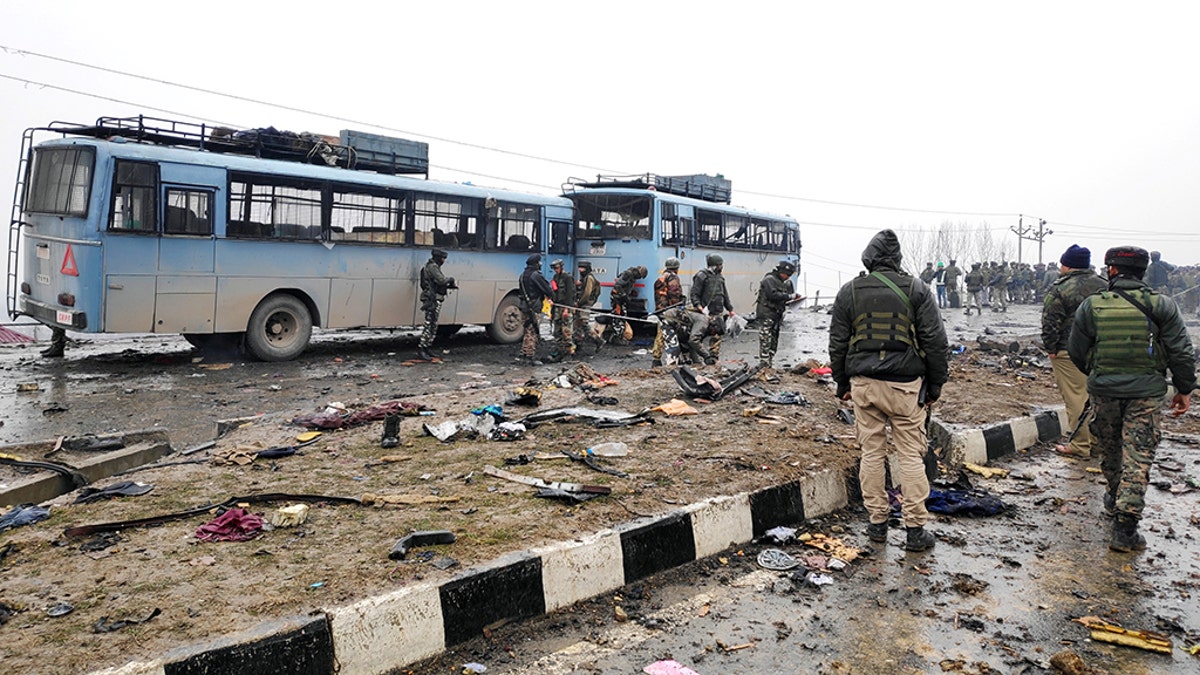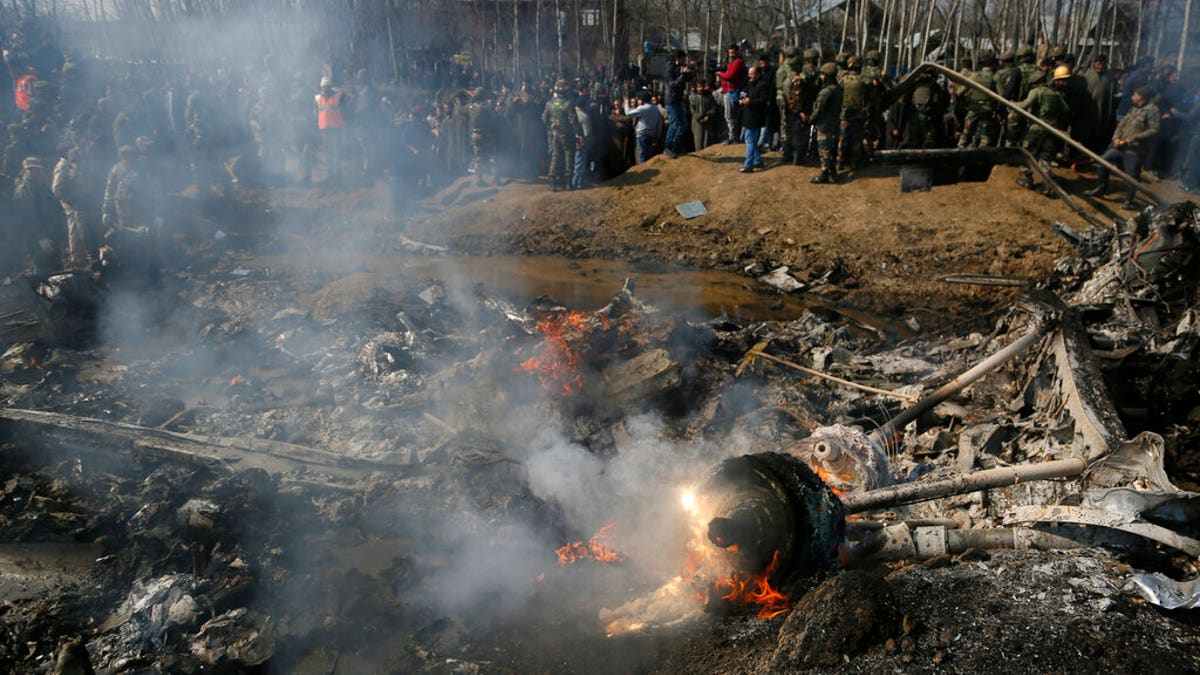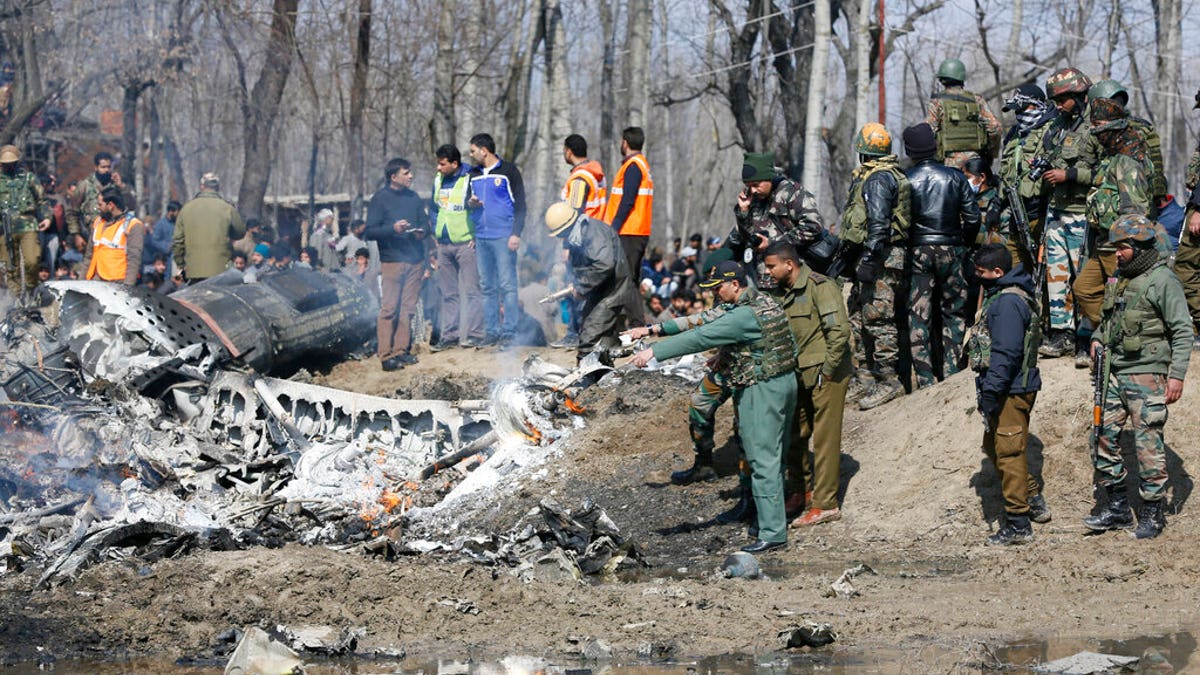Tensions between India and Pakistan have once again reached a boiling point this month, culminating in both countries saying they shot down fighter jets from the other's air forces Wednesday.
Pakistan’s air force said they shot down two Indian warplanes that had crossed to the Pakistani side of Kashmir and took both pilots captive. Indian officials also claimed they shot down a Pakistani fighter jet, though Pakistani officials denied any of their jets had been hit, Reuters reported.
In response to the attacks, Pakistan’s Civil Aviation Authority said it closed its airspace to all commercial flights.
PAKISTAN SAYS IT SHOT DOWN 2 INDIAN WARPLANES, SHUT DOWN ITS AIRSPACE
The fractured relationship between the two countries is nothing new and Kashmir has been at the center of the heated rivalry between the neighboring nuclear powers as far back as the 1940s when Britain still occupied Pakistan and India.
A contested region
Kashmir is a region in the northwestern part of the Indian subcontinent bordered by Afghanistan, Pakistan, India and China. The region is roughly 86,000 square miles and is controlled by India, Pakistan and China.
There is a 435-mile long border between India-controlled and Pakistan-controlled Kashmir known as the Line of Control, though neither country acknowledges it as an international border.
Much of the conflict arises from the Indian-controlled side of Kashmir because its inhabitants don’t want to be governed by India, BBC reported. That side also has high unemployment and complaints of human rights abuses, according to the outlet.
What started the most recent tensions?

Pakistan-based group Jaish-e-Mohammad (JeM) claimed responsibility for a suicide bombing that killed more than 40 Indian soldiers in Kashmir on Feb. 14. The debris of the car bombing is pictured. (REUTERS/Younis Khaliq - RC1561C6D6E0)
A day before the two nations claimed they shot down each other’s fighter jets, India announced it would launch an airstrike in Pakistan-controlled Kashmir, targeting “terror camps” of the Pakistan-based group Jaish-e-Mohammad (JeM).
India said its bombs killed a "very large number" of militants, while Pakistan said there were no casualties in an airstrike it described as being carried out "in haste."
JeM had earlier claimed responsibility for a suicide bombing that killed more than 40 Indian soldiers in the Indian-controlled side of Kashmir on Feb. 14. And even though Pakistan denies any involvement in the attack, the country has vowed to respond to any Indian military operation against it.
Dangers of escalating tension
Both India and Pakistan are believed to possess more than 100 nuclear warheads each. They have also conducted atomic weapon tests and have test-fired nuclear-capable missiles.
INDIA LAUNCHES AIRSTRIKE IN PAKISTAN-CONTROLLED KASHMIR TARGETING 'TERROR CAMPS'
Pakistan also has refused to renounce the first-strike option with its atomic bombs should it feel outgunned in a conventional war. It would take less than four minutes for a missile fired from Pakistan to reach India.
The Bulletin of Atomic Scientists warns that "computer models have predicted that the physical impacts of a nuclear exchange between India and Pakistan, or even a single strike on a large city, would be devastating and would reverberate throughout the world."
Conflict over Kashmir begins

Kashmiri villagers and Indian army soldiers gather near the wreckage of an Indian aircraft after it crashed in Indian controlled Kashmir. (AP Photo/Mukhtar Khan)
When Britain granted independence to the region with the Indian Independence Act of 1947, it divided the Indian subcontinent into a predominantly Hindu India and mostly Muslim Pakistan.
Kashmir, the only Muslim majority area ruled by a Hindu ruler, was allowed to join either India or Pakistan. The ruler, Hari Singh, decided to accede to India, which started the first war between India and Pakistan in 1947.
DOZENS OF INDIAN SOLDIERS KILLED IN KASHMIR SUICIDE BOMB ATTACK
The war ended in 1949 when a United Nations resolution established a ceasefire line dividing Kashmir.
The two countries fought a second, brief war over Kashmir again in 1965, which also ended in a ceasefire.
Line of Control officially separates Kashmir
In 1971, Pakistan and India fought over what was East Pakistan but became Bangladesh. That dispute led to the 1972 Simla Agreement which formally separated the Kashmir line of ceasefire into the Line of Control and intended to build a good relationship between India and Pakistan.
Skirmishes continue, even in peacetime

An Indian Air Force officer along with others inspects the wreckage of an Indian aircraft after it crashed in Indian controlled Kashmir. This crash is the latest development as tensions rise betwen Pakistan and India over Kashmir. (AP)
Even though the countries weren’t directly at war with each other, the insurgency in Kashmir continued throughout the 1980s and escalated in the 1990s. Civilians on both sides were harmed and troops were reportedly sent across the Line of Control.
In 1999 and 2000, after Pakistan's military sent a ground force into Indian-controlled Kashmir at Kargil, the two countries faced off yet again.
India and Pakistan agreed to another ceasefire in 2003, BBC reported, but even in times of relative peace the two nations readily engage in brinkmanship and aggressive rhetoric.
Tensions escalate again with death of militant leader Burhan Wani
In July 2016, 22-year-old militant leader Burhan Wani was killed in a gunbattle with Indian troops. His death triggered open defiance against Indian rule in Kashmir and led to months of protests and clashes.
Those events made the armed rebellion mainstream in Kashmir and gave new life to the rebel movement that had started in 1989, but had withered in recent years.
More than 500 people were killed in 2018, which BBC reported as the highest death toll in 10 years.
Fox News' Edmund DeMarche, Louis Casiano, Anna Hopkins, Barnini Chakraborty and The Associated Press contributed to this report.

